Bars, tank, seat and pegs are the primary contact points for input. Learning how to properly balance them with body position is key to motorcycle riding.
I had a rider ask me recently what I felt was the most common problem that I encounter when teaching new riders at the racetrack. Without hesitation, I responded “body position and rider inputs to the motorcycle”. Most experienced track instructors will agree. When you think about it, our riding is nothing more than the sum of the inputs that we give the motorcycle. These inputs come through the bars, tank, seat and pegs, our four primary contact points. Learning how to properly balance these four contact points is the key to riding with confidence.
Teaching a rider the proper strategy through a corner is a comparatively simple task. Good instructors can explain the reasoning behind a particular line, point out the expected benefits and provide new reference points to follow. Even riders who have been through a given corner hundreds of times can easily alter their strategy and make rapid improvements. If they happen to make a mistake or lose focus, these riders will sometimes fall back into their old habits, but with proper focus they can get right back on track the next lap. The lack of relative repetition makes change easier, considering that if we visit a certain racetrack ten times a year, we still might only go through a given corner 500 times over the course of that season.
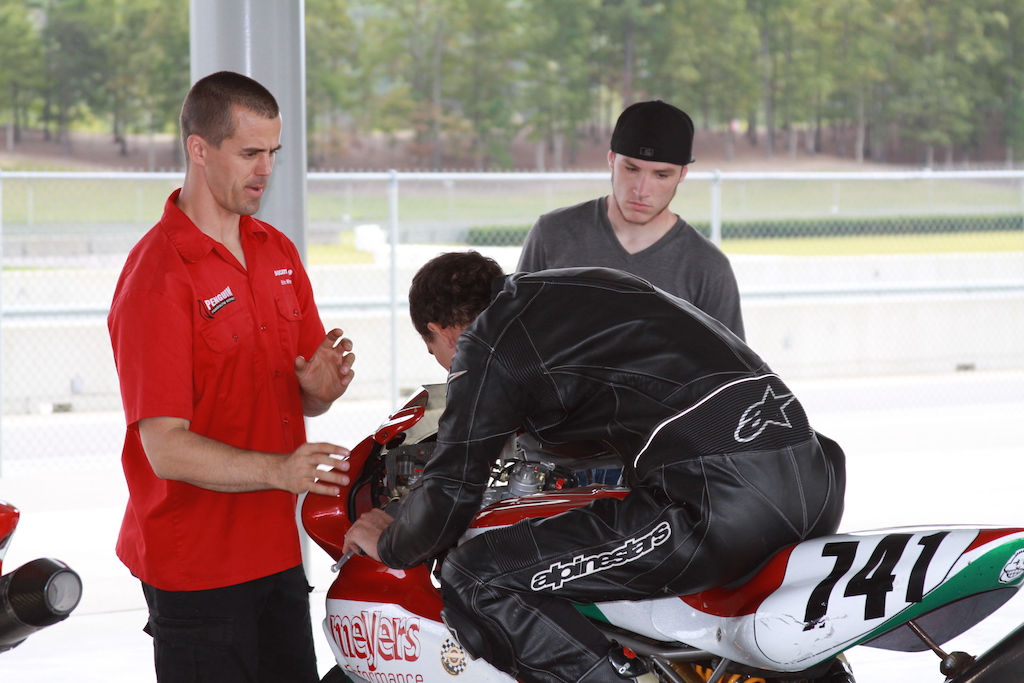
Teaching a rider the proper strategy through a corner is a comparatively simple task. Good instructors can explain the reasoning behind a particular line, point out the expected benefits and provide new reference points to follow. Even riders who have been through a given corner hundreds of times can easily alter their strategy and make rapid improvements. If they happen to make a mistake or lose focus, these riders will sometimes fall back into their old habits, but with proper focus they can get right back on track the next lap. The lack of relative repetition makes change easier, considering that if we visit a certain racetrack ten times a year, we still might only go through a given corner 500 times over the course of that season.
Alternatively, body position affects a rider every moment that he or she is on the track. Riders develop habits over the years that are reinforced tens of thousands of times, creating muscle memory that makes each rider’s movements on the motorcycle automatic. This makes body position far more difficult to change. Imagine if someone tried to change the way the you walk.
If, for instance, you tended to always walk on the inside of your foot, pronation, and a doctor wanted you to learn to be more balanced and move your weight to the center, it would take a lot of initial conscious thought to make that change. However, since people tend to take several thousand steps per day, this creates a lot of opportunities to “burn” in the new motion. If a person focused on walking that way for several days, it would soon start to feel natural. Then again, if during your first day a certain situation distracted you like being chased by a pit bull, you would run exactly as you had in the past, ignoring your new effort to stride properly.
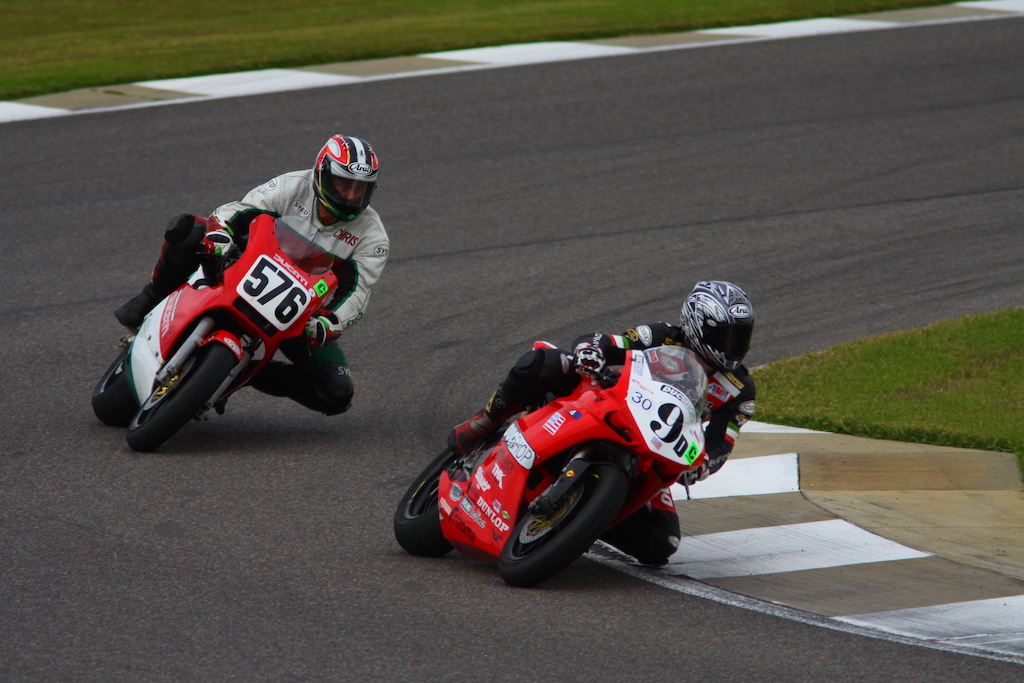
The difficulty in making body position changes lies in that riding a motorcycle quickly around a track requires significant concentration for most people. The “distractions” that can occur like making sure that you brake enough to make an apex, are present several times each lap. This is like trying to make changes to your gait while walking down a road that has pit bulls on the loose at every new house you pass by. The dogs are coming, and when they are nipping at your heels you cannot help but give them your full attention.
The solution to this problem is simple, but it requires some sacrifice on your part. One that is often too much to bear for may riders. What is that sacrifice? Simply put, slow down. Walk down a street without any dogs! When implementing a change to body position or bike input, riders must slow down to a speed that removes any fear of making mistakes. Since body position is something that must be given attention the entire time that one is riding, it requires constant focus to ensure that it is done right. The most difficult part of this process is that it takes patience to learn a new posture on the bike and burn it into your muscle’s memory. The general scientific consensus is that it takes 3,000 to 5,000 repetitions of a pattern of movement to develop a subconscious response.
CRASHING – IMPROVE YOUR SKILLS
The whole key to making the goal of implementing new body position successful is the word “subconscious”. When we have reached this level of automatic response, we run properly even with the pit bull nipping at our heels, or the front wheel on the verge of tucking. The key is to have the patience that it takes to achieve those 3,000 to 5,000 repetitions. This leads us to the question, “how many laps is that?”
Of course, this is difficult to precisely quantify, as it’s not as simple as multiplying the number of corners by the number of laps run. Riders make multiple moves and inputs per corner and must maintain proper position through the entire sequence. If we use a rough estimate of 4 to 5 moves per corner and assume that the average track has 12 corners, then we can conclude that it will take about 50 laps or 6 to 7 riding sessions, to achieve at least 3,000 reps.
This model is full of estimations and is by no means precise, but it does actually correlate with the time frame that instructors normally see for a rider to be able to implement a body position change and make it feel natural… about a full day on the track. This also explains why so many riders continue year after year with the same bad habits, as it’s very difficult to have the discipline to focus on body position for an entire day. Most riders try a technique for a session or two and then give in to the urge to start riding hard, which is the equivalent of baiting the pit bulls by strapping a freshly cooked pork chop to each heel.
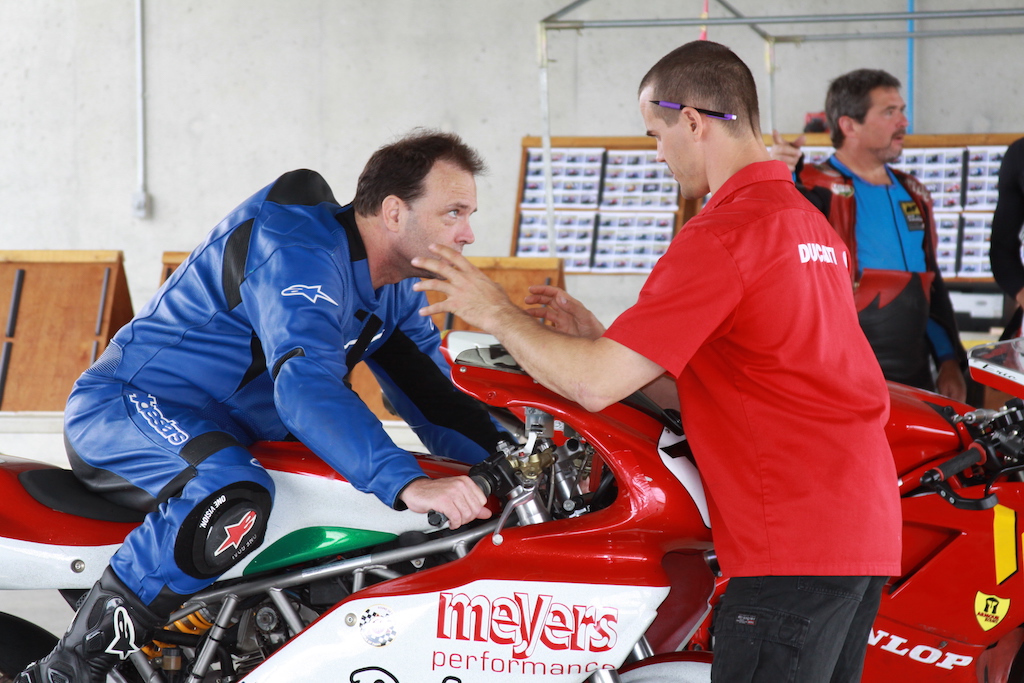
When it comes to making improvements on the racetrack, body position and bike inputs are everything. The importance of doing all that you can to maximize traction and increase rider feedback cannot be overemphasized. Many riders, in fact, most riders, create artificial ceilings for speed as a result of how they sit on the seat, hold the bars and manipulate the controls. These riders wonder how the “fast guys” can ride so fast and make it look so easy. Truth be told, when you have proper riding technique, it is easy.
If finding the secrets to riding blazingly fast appeals to you, then ask yourself if sacrificing one day at the track is worth a lifetime of improvement. Let me be clear, I’m not promising that you can learn all that there is to know in a day. What I can promise you is that the benefits derived from making the sacrifice needed to turn proper technique into subconscious action are absolutely worth the effort. There is nothing else you can do that will make more difference in your riding. However, if you give in to the urge to ride too fast too early, you’d better watch your back because the dogs are coming!
Until next time… Ride fast. Ride safe!
Images: Etech Photo
About The Author
Discover more from SportBikes Inc Magazine
Subscribe to get the latest posts sent to your email.
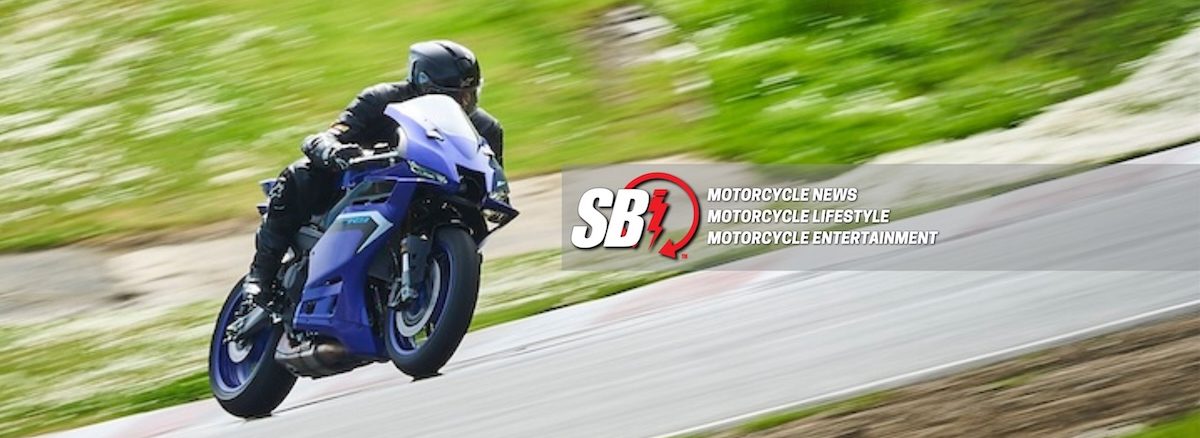
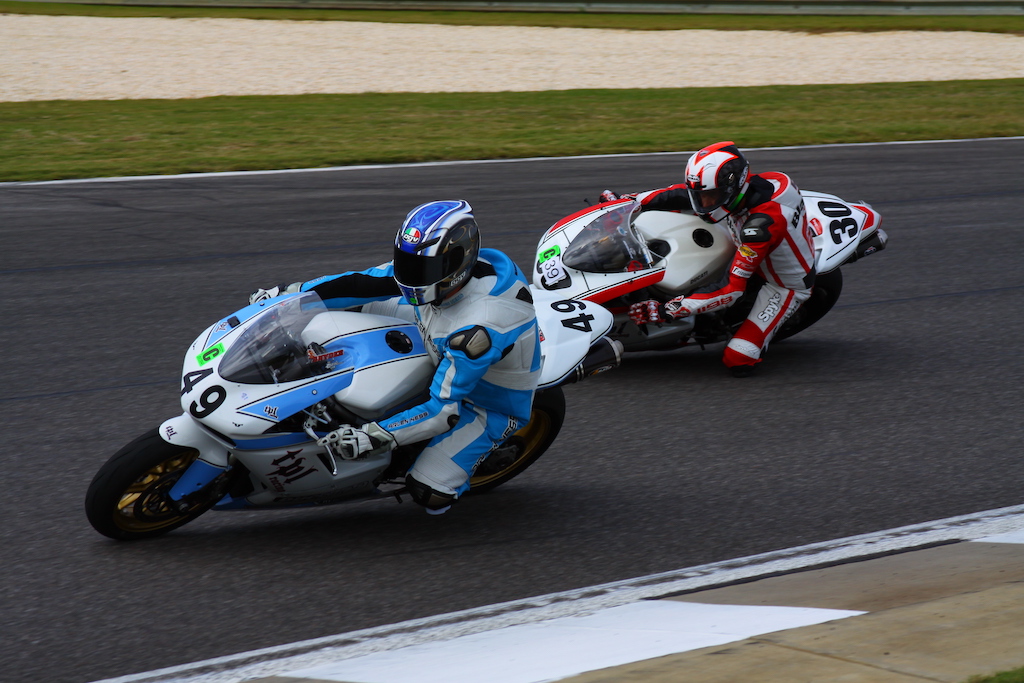


1 thought on “Body Position – Improve Your Skills”